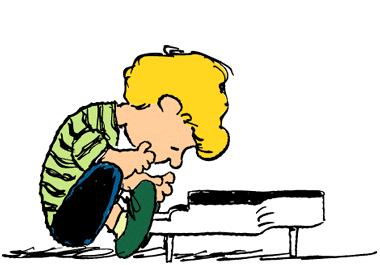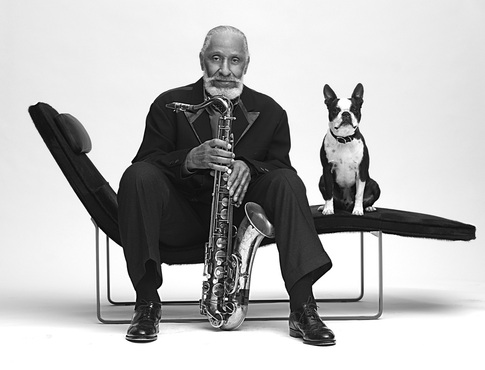|
I hope you enjoy this rendition of one of my all-time favorite Christmas songs, "Christmas Time Is Here" by Vince Guaraldi. I grew up watching the Charlie Brown Christmas special -- can't help but think it had a huge musical influence on me -- probably some of the first jazz I was exposed to a a young listener. Enjoy!
0 Comments
I know it's a lot to declare something your absolute "favorite" but I must say if someone asked me right now what my favorite chord voicing on the piano is, I wouldn't hesitate. It's the minor 11 voicing I'm about to teach you. Sure, ask me in a couple of years, I'll probably have moved on. But ever since I heard this voicing I can't get enough! For those who can't wait to hear and see the specific chord I'm talking about and learn how to play it, check out the video below. For those who don't want a fish but want to be taught how to fish, let's talk some theory. At it's basics a minor 11 chord contains the notes of a minor 7 chord with some tensions added on. So if we are thinking in terms of a major scale, the 4 notes of a plain old minor 7 chord are the root (1), b3, 5, b7. For a Cminor7 chord that would be C, Eb, G, Bb. That covers the plain parts of the chord, but things start to get spicy when we add what are called chord tensions, typically the 9, 11, and 13. This chord uses the 9th and 11th and leaves out the 13th. If we are still talking Cminor7 that would be a D and an F. (Note: Remember 9th, 11th and 13th are just a fancy way of saying the 2nd, 4th, 6th, but that's for another article) So here are the notes that make up our minor 11 chord: Root b3, 5, b7, 9, & 11, OR in C -- C, Eb, G, Bb, D, and F. Notes are one thing, those are just the building blocks of the chord. Where it really starts to get interesting is the voicings, that is, the arrangement or order in which we play those notes. In our left hand we play the Root, 5th, and 9th. This makes two stacked perfect fifths, a nice open sound. In the right hand, we play the b3, b7, and the 11. Guess what? Two more stacked perfect fifths. But here's where it gets juicy, when we put our hands together we get an interval between the top note of the left hand and the bottom note of the right hand -- a super crunchy minor 2nd. So we have a bunch of open sounding fifths and to contrast it we have the bite of the dissonant minor second. Now that's my kinda voicing. Check it out, I don't think you'll be disappointed. Happy Shedding! When I was a young student of jazz (ahh...the olden days!) I was on what seemed like a never-ending quest for a way to play solo jazz piano that didn't make everything sound like a ballad you'd hear in a cocktail lounge. The ragtime and stride pianists back in the day could make people dance with just a piano, why couldn't I? While I'm still working hard on my solo piano skills (never stop learning!), I've discovered a few techniques along the way that I've found helpful. The one revelation I'm going to share with you all today is...drum roll...HALF NOTES in the left hand! Half notes?!? you might ask? That's right. Plain old half notes in your left hand can do a lot more than you think. Half notes in the left hand are imitating what a bass player does. If you want your solo piano playing to sound more like a band, you have to stop thinking like a piano player and think like an arranger instead. Each hand (or better yet each FINGER) is its own instrument. In this example, your left hand is the bass player. And the bass is where the groove comes from. So the left hand (bass player) is going to start by playing half notes. The reason we start with half notes comes from what actual bass players play. In a medium swing tune, before a bass player starts walking on all four beats (i.e. quarter notes), he/she plays what's called a two-feel, aka two notes per measure, aka half notes. A traditional bossa nova player plays plain old half notes to lay the foundation of the groove. So that's where we will start with our left hand! Try it over a few different tunes -- some with a swing feel and others with a straight 1/8th feel (i.e. a bossa). Play just the melody on top of it. You'll be suprised at how much the half notes in the left hand add groove! Here are a few rhythmic embellishments to try after you've mastered the plain half notes. 1. Add 1/8 note pickups to each half note. 2. Add a quarter note on beat 4 so each measure is half, quarter, quarter (or do this every other measure). 3. At the beginning of a four measure phrase, anticipate the first note on beat 4 of the previous measure. 4. Write out a bass line that uses all three of the above techniques. If you practice this a lot, soon enough you'll be creating your own rhythmic embellishments, all with an underlying half note groove. In the following two-part video tutorial, I teach you an arrangement of Sonny Rollins' "St. Thomas" that uses this technique. I hope you enjoy the videos, I've been working hard in the lab on upping the ante with the audio and video and quality. Please tell me what you think, I'm always looking for ideas on how to get better. While you are at it, let me know if you have any song requests for future videos! Happy Shedding! |
Recent PostsCategories
All
Archives
October 2023
|




 RSS Feed
RSS Feed